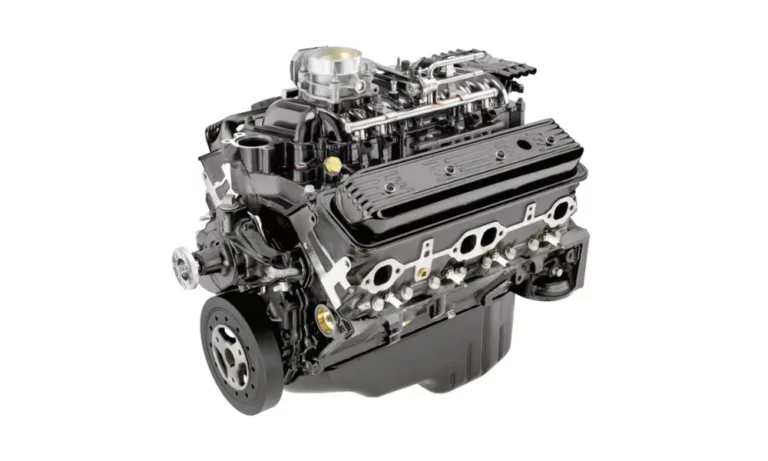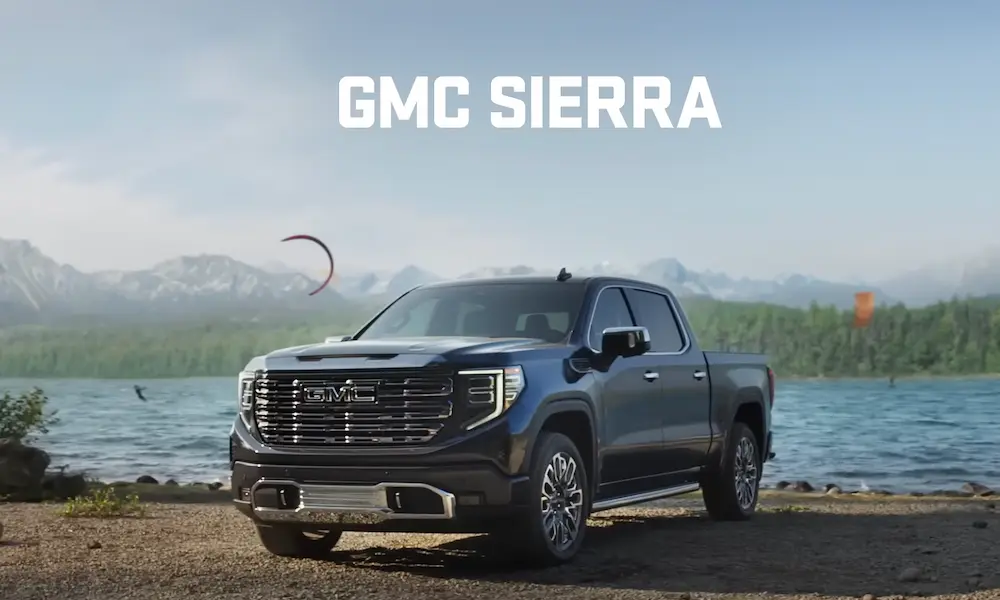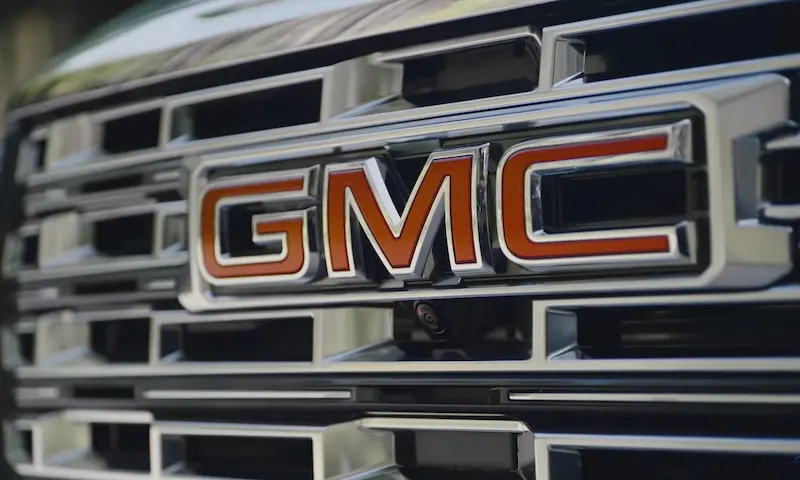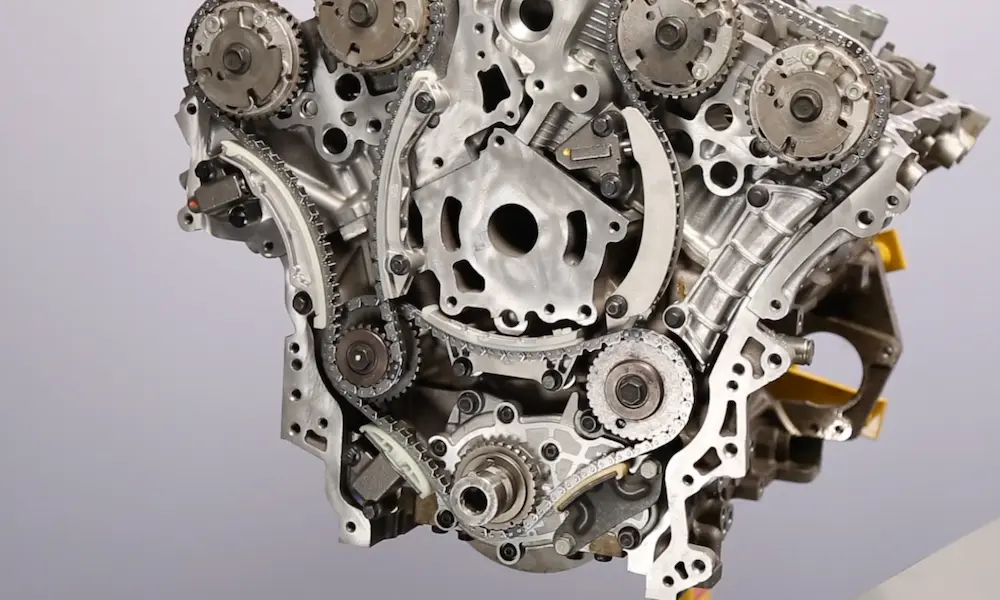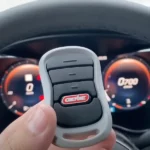Looking to understand what makes the 5.7L Vortec tick? Whether you’re planning an engine swap, diagnosing problems, or just satisfying your curiosity, you’ve come to the right place. This guide unpacks everything about this legendary GM powerplant that’s powered countless trucks, SUVs, and boats since the mid-90s. Stick around as we dive deep into the specs, features, and applications of this iconic V8.
What Is the 5.7 Vortec Engine?
The 5.7 Vortec (L31) is a small-block V8 engine manufactured by General Motors. It’s essentially the final evolution of GM’s first-generation small block architecture, sometimes called “Gen 1+” in enthusiast circles. This 350 cubic inch powerplant gained the “Vortec” name from its improved cylinder head design that created a swirling vortex effect for better air-fuel mixing.
The engine debuted in 1996 GM trucks and SUVs, replacing earlier 350 engines with technology that boosted power while improving efficiency. With its cast iron block and heads, the 5.7 Vortec was built for durability first and foremost, making it a favorite for truck owners and boaters alike.
5.7 Vortec Base Specifications
Let’s start with the fundamental specs that define this engine:
| Specification | Measurement |
|---|---|
| Engine Type | V8, 90° Block Angle |
| Displacement | 350 cubic inches (5.7 liters) |
| Bore | 4.00 inches (101.60 mm) |
| Stroke | 3.48 inches (88.39 mm) |
| Compression Ratio | 9.4:1 |
| Block Material | Cast Iron GM232-M |
| Cylinder Head Material | Cast Iron |
| Firing Order | 1-8-4-3-6-5-7-2 |
| Engine Orientation | Longitudinal |
| Valvetrain | OHV, 2 valves per cylinder |
| Assembly Location | Toluca, Mexico |
The 5.7 Vortec follows the classic small-block Chevy architecture with its 90-degree V configuration and overhead valve design. With a bore of 4 inches and stroke of 3.48 inches, it’s slightly oversquare in design, meaning the bore diameter exceeds the stroke length. This configuration generally favors higher RPM operation compared to undersquare engines.
5.7 Vortec Power and Torque Outputs
One of the most commonly asked questions about any engine is: “How much power does it make?” For the 5.7 Vortec, the answer varies based on application:
Automotive Applications
- 255 horsepower @ 4,600 RPM
- 330 lb-ft of torque @ 2,800 RPM
These figures represent the typical output in GM trucks and SUVs from 1996-2002. The L31 Vortec represented a significant improvement over earlier 350 engines, offering better throttle response and increased low-end torque that truck owners appreciate.
Marine Applications
- Standard configuration: 292 hp @ 4,800 RPM and 370 lb-ft @ 3,200 RPM
- Enhanced marine packages: Up to 315 hp @ 5,000 RPM and 400 lb-ft of torque
Marine versions received different calibrations and components to handle the unique demands of boat propulsion. Companies like Michigan Motorz offer enhanced packages that squeeze even more performance from these robust engines.
Alternative Fuel Versions
- Propane (LPG): 216 hp @ 4,000 RPM and 308 lb-ft @ 1,400 RPM
- Natural Gas (CNG): 196 hp @ 4,000 RPM and 283 lb-ft @ 1,600 RPM
Industrial and commercial applications often utilized these alternative fuel configurations, which traded some power for fuel flexibility and emissions benefits.
Valvetrain and Induction Design
The 5.7 Vortec’s valvetrain uses a traditional pushrod design, but with important refinements over earlier small-block Chevy engines:
Valvetrain Components:
- Hydraulic roller lifters (reduced friction compared to flat tappet designs)
- Advanced design silent timing chain for reliability
- Positive inlet valve stem seals to control oil consumption
- 16 valves total (2 per cylinder – intake and exhaust)
Induction Systems:
The 5.7 Vortec was produced with several different induction setups:
- Central Multi-Port Fuel Injection (CMPI) – In automotive applications
- Multi-Point Injection (MPI) – For certain marine applications
- Carburetor – Available for some marine and industrial applications
- Integral Air Fuel Module (IAFM) – Later designs with:
- Stainless steel fuel rails
- Stainless steel injector tips
- Integrated throttle body with TPS and IAC
The high-flow cylinder heads featured straighter intake ports compared to previous designs, which significantly improved the engine’s breathing ability. This change alone accounted for much of the power increase over pre-Vortec 350 engines.
Construction Materials and Durability Features
The 5.7 Vortec was built with durability as a primary concern, which explains its reputation for longevity:
Block and Major Components:
- Block: Cast Iron GM232-M (renowned for strength)
- Cylinder Heads: Cast Iron
- Crankshaft: Nodular Iron
- Connecting Rods: Forged SAE 1141 steel
- Main Bearing Caps: Cast Iron GM232-M
- Camshaft: 5150 Steel Billet
Special Durability Features:
- Stainless steel core cylinder head gaskets for corrosion resistance
- Composite front timing cover that reduces noise and prevents corrosion
- Advanced water pump design with improved efficiency via shrouded impeller
- In marine applications, water pumps designed to rotate in either direction
The use of cast iron for both the block and heads contributed to excellent heat management and long-term durability, though at the cost of additional weight compared to aluminum alternatives.
5.7 Vortec Vehicles and Applications
The versatility of the 5.7 Vortec is demonstrated by its wide range of applications:
GM Trucks and SUVs (1996-2002):
- Chevrolet C/K 1500 Trucks
- GMC Sierra 1500
- Chevrolet Suburban/Tahoe
- GMC Yukon/Yukon XL
- Chevrolet Express/GMC Savana Vans
Marine Applications:
The 5.7 Vortec became a staple in the boating world, used by major manufacturers including:
- MerCruiser
- Volvo Penta
- Marine Power
- Indmar
- PCM
It powered countless recreational boats including popular wakeboard and ski boats from brands like Ski Nautique, Malibu, and Mastercraft.
Industrial and Commercial Uses:
- 50kW generator packages
- Industrial power units
- Stationary power generation
- Continuous duty applications
This flexibility across automotive, marine, and industrial settings speaks to the fundamental soundness of the design.
Performance Potential and Upgrades
While the stock 5.7 Vortec delivers respectable performance, it responds well to modifications:
Common Performance Upgrades:
- Intake manifold replacement (aftermarket aluminum intakes provide better flow)
- Camshaft upgrades (more aggressive profiles increase power at higher RPM)
- Cylinder head porting or replacement with performance-oriented heads
- Headers and exhaust system upgrades
- Computer tuning for fuel-injected versions
Performance enthusiasts can realistically achieve 350-400 horsepower with bolt-on modifications while maintaining good street manners. More extreme builds with displacement increases, forced induction, or complete head/cam packages can push output well beyond 500 horsepower.
Known Issues and Reliability Concerns
The 5.7 Vortec is generally regarded as very reliable, but it does have some known weak points to watch for:
Common Problem Areas:
- Intake manifold gasket failures (especially in 1996-1999 models)
- Distributor gear wear
- Fuel spider/injector assembly leaks
- Water pump failures at high mileage
- Oil consumption in high-mileage engines due to valve seal wear
Most of these issues have been addressed by aftermarket solutions, and many 5.7 Vortec engines remain in service well beyond 200,000 miles with proper maintenance.
Maintenance Recommendations
To keep a 5.7 Vortec running strong:
- Change oil every 3,000-5,000 miles with quality 10W-30 or 5W-30 oil
- Replace the fuel filter every 30,000 miles
- Use the correct spark plugs (AC Delco R44LTS or equivalent) gapped at 0.045″
- Inspect the distributor cap and rotor annually
- Change coolant every 60,000 miles with the proper DEX-COOL formula
- Check for intake manifold gasket leaks if coolant loss occurs
- Monitor oil pressure – should be 20-25 PSI at idle, 45-60 PSI at highway speeds
Following these guidelines will help maximize engine life and prevent common issues.
How the 5.7 Vortec Compares to Other GM V8s
The 5.7 Vortec sits in an interesting position in GM’s engine timeline:
Vs. Earlier 350 Small Blocks:
- More power and torque than pre-Vortec 350s
- Better fuel efficiency due to improved combustion chamber design
- Electronic engine management in most applications vs. carburetion
Vs. LS Engines (That Replaced It):
- Heavier due to cast iron construction (vs. aluminum LS blocks/heads)
- Less power potential in stock form
- Simpler design with fewer sensors and components
- Easier to work on with traditional small-block layout
- More affordable to rebuild
The 5.7 Vortec represents the peak evolution of the first-generation small block design before GM transitioned to the more modern LS architecture.
Historical Significance of the 5.7 Vortec
The 5.7 Vortec holds an important place in automotive history:
- Represents the final refinement of GM’s original small-block V8 design
- Designated as the L31 in GM’s engine naming system
- Part of the Chevrolet small-block family, one of history’s most successful engine designs
- Bridged the gap between carbureted small blocks and modern LS engines
- Remained in production as a crate engine even after being phased out of vehicles
It’s worth noting that the 5.7 Vortec was eventually replaced in GM trucks by the LS-based 5.3L (LM7) and 6.0L (LQ4) engines, which offered aluminum construction and more modern designs.
5.7 Vortec Engine Specs for Different Operating Parameters
For those interested in the operational parameters of the 5.7 Vortec:
- Full throttle operation range: 4,600-5,000 RPM (application dependent)
- Maximum engine speed: 4,800-5,000 RPM (varies by application)
- Rotation: Counter-clockwise (viewed from flywheel)
- Some marine applications offered clockwise rotation
- Bore spacing: 4.4 inches (111.76 mm)
- Deck height: 9.025 inches
These specifications are important for those considering engine swaps or performance modifications, as they determine compatibility with various transmissions and accessories.
Parts and Rebuilding Information
If you’re considering rebuilding a 5.7 Vortec or searching for replacement parts:
Common Replacement Parts:
- Cylinder head torque sequence: Critical for proper gasket sealing
- Head bolt torque: 65 ft-lbs (in proper sequence)
- Main cap torque: 70 ft-lbs
- Rod bolt torque: 45 ft-lbs
- Intake manifold torque: 11 ft-lbs (in sequence)
- Oil capacity: 5 quarts with filter
- Coolant capacity: Approximately 16 quarts (system dependent)
Many aftermarket companies offer complete rebuilt 5.7 Vortec engines or components, often with improvements that address common failure points.
Summary: Why the 5.7 Vortec Remains Popular
The 5.7L Vortec continues to have a dedicated following for several compelling reasons:
- Proven reliability when properly maintained
- Abundant parts availability at reasonable prices
- Easy to work on with conventional tools
- Strong low-end torque ideal for trucks and boats
- Responds well to performance modifications
- Runs well on regular unleaded fuel
- Adaptable to multiple applications
- Simple design without complex electronics
For truck enthusiasts, boat owners, and hot-rodders alike, the 5.7 Vortec represents an excellent balance of power, reliability, and value that continues to make it relevant decades after its introduction.
Whether you’re maintaining an original 5.7 Vortec vehicle, considering an engine swap, or exploring performance upgrades, understanding these specifications provides the foundation for making informed decisions about this legendary GM powerplant.

